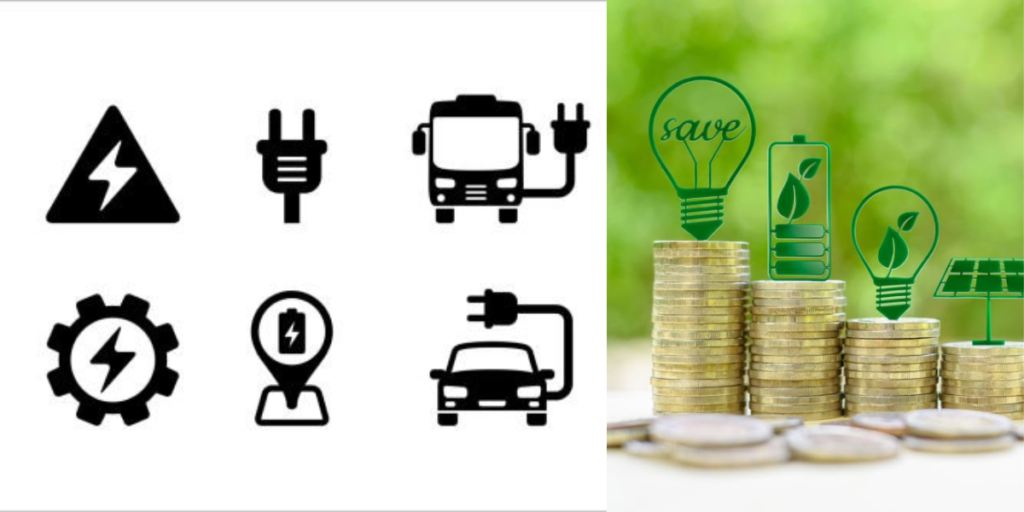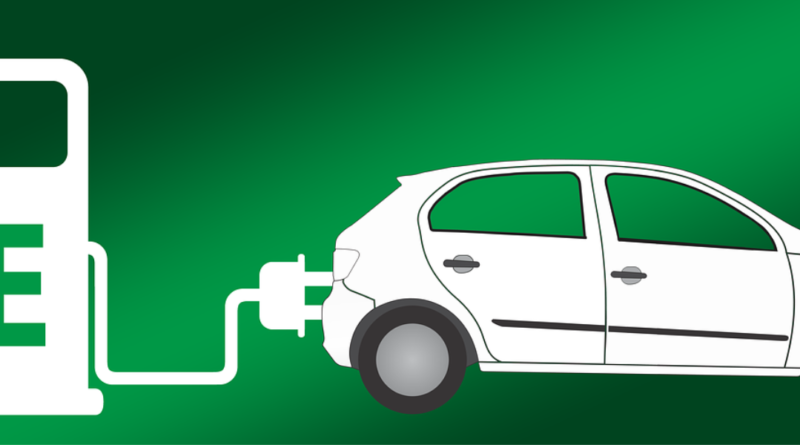Future of Electric Vehicles and Eco-Friendly Transportation

The electric vehicle sector is leading the way in a revolutionary move towards sustainable mobility in a world where environmental issues are becoming more and more apparent. Electric vehicles (EVs), which combine state-of-the-art technology with environmentally friendly methods, have become a ray of hope. With an emphasis on battery technology, charging infrastructure, and their significant influence on lowering carbon emissions, we explore the most recent developments in electric vehicle technology in this investigation.
Unveiling the future of Electric Vehicles
Battery Technology Developments: Opening the Door to Efficiency and Range
The electric vehicle revolution is mostly driven by advancements in battery technology, which have allowed EVs to attain new heights in efficiency and range. Solid-state battery development is one major advancement. These batteries provide easier charging times, a greater lifespan, and more energy density since they use solid electrolytes rather than liquid ones. Solid-state batteries are reshaping the future of electric vehicles (EVs) with a reduced risk of overheating and more secure features.
In addition, scientists are investigating cutting-edge materials like silicon and graphene to expand the capabilities of lithium-ion batteries. These components support the sustainability of battery manufacturing while also improving energy storage. When these innovations advance, electric cars will not only travel farther
longer distances on a single charge, but also offer a greener production process.
Reducing carbon emissions:
The Effects of Electric Mobility on the Environment Eco-Energy Solutions with Lithium-Ion Batteries and Fuel Cells Reducing carbon emissions is the main driving force behind the boom in electric automobiles. Vehicles with internal combustion engines (EVs) have no tailpipe emissions, in contrast to conventional cars. Still, there is more to the environmental effect than just the lack of direct emissions. The source of the power used for charging electric vehicles has a significant impact on their total carbon footprint.
The carbon footprint of charging electric cars falls dramatically as the world’s energy system shifts to renewable sources. The transition to electric mobility is part of a comprehensive strategy to reduce greenhouse gas emissions, as governments and companies around the world are investing in renewable energy sources.
Infrastructure for Charging: The Foundation of Electric Mobility

Building a strong infrastructure for charging electric cars is essential to their widespread adoption. Users now have more access to and convenience with EVs thanks to recent developments in charging technology. The number of fast-charging stations with high-capacity chargers is growing, which cuts down on the amount of time needed for charging. The broad adoption of electric cars and the encouragement it offers to future EV adopters are both aided by this development.
Another area being researched is wireless charging. EVs could be able to charge without any problems while they are parked or even moving. This improves the charging process both in terms of speed and cleanliness by doing away with the requirement for actual cords while also improving the user experience.
Energy Management and Intelligent Charging: Increasing Efficiency
The way we think about electric transportation is being revolutionized by the combination of smart and connected technology. In addition to speeding the charging method, intelligent charging solutions help make use of energy easier. Artificial intelligence and sophisticated energy management systems allow for predictive costing that considers cost, grid conditions, and the consumption of energy.
Vehicle-to-grid (V2G) technology gives the ecosystem an additional degree of intelligence. V2G-capable EVs have the ability to return extra energy when needed, in addition to consuming energy from the grid. This two-way energy flow improves grid stability and makes the energy infrastructure more responsive and dynamic.
Coupling connected and smart technologies:
Electric cars have more in store than just mobility; they will also seamlessly integrate connected and intelligent technology. Connected car technology extends beyond basic entertainment and navigation systems. Artificial intelligence, vehicle-to-everything (V2X) connectivity, and advanced driver assistance systems (ADAS) are coming together to improve the entire safety and driving experience of electric vehicles.
For example, ADAS technology like lane-keeping assistance and autonomous emergency braking not only increase safety but also assist drivers in driving more efficiently, maximizing energy use. Predictive maintenance is made possible by AI integration in electric cars, ensuring optimal efficiency over time.
Intelligent transportation systems can benefit from the increased connectivity of electric cars. The sharing of data is facilitated by this connectivity.
Ecological Economy and Sustainable Production:
Emissions from electric cars are being considered at the manufacture and end-of-life phases, in addition to the operation period. The circular economy’s emphasis on recycling, reusing, and cutting waste is being embraced by the electric car sector more and more.
To recover valuable components from outdated batteries, manufacturers are implementing recycling activities and investigating sustainable materials for vehicle production. This strategy reduces the negative effects on the environment and contributes to the development of an electric car supply chain that is more sustainable.
Furthermore, cutting-edge commercial strategies are starting to appear, such as battery leasing and recycling initiatives. By reducing the environmental impact of producing new batteries and extending their lifespan, these projects hope to improve the long-term sustainability of electric vehicles.
Global Collaboration and Standards:
International cooperation and standardization are critical to the electric car revolution’s success. It is vital to set universal standards for vehicle-to-grid communication, battery technology, and charging infrastructure as the automotive industry begins in this transformative direction.
The ISO/IEC 15118 standard for electric vehicle communication, which aims to provide a global protocol for EV charging, is an example of a project that demonstrates international collaboration. These standards promote compatibility and lay the foundations for the growth of an ecosystem for electric vehicles that is really global in scale.
Ongoing Support from the Government and Policy Initiatives:
Government assistance and legislative actions have had a huge impact on the success of the electric car revolution. For the purpose of fostering the use of electric cars, multiple nations are providing tax breaks, credits, and subsidies. Further driving automakers to emphasize the development and production of electric and low-emission vehicles are rigorous emission norms and goals.
Additionally, governments are funding R&D to improve the infrastructure for charging electric vehicles and their technologies. This dedication stimulates creativity and quickens the shift to a greener transportation system. It is the duty of policymakers to foster an atmosphere that promotes widespread use of electric cars and promotes public access to green alternatives.
Education and Awareness Programs:
Education and awareness are essential in the shift to a sustainable future. Cultivating a supportive ecosystem requires public education on the advantages of electric cars, the adverse effects that regular vehicles have on the environment, and the ongoing advances being made in green technology.
Programs for education can focus on both present and future drivers, encouraging a thorough comprehension of the effects that transportation decisions have on the environment. Giving people the information they need to make educated decisions that support larger green goals paves the way for a society that actively participates in switching to electrical vehicles.
Collaborations amongst academic institutions, environmental advocacy groups, and the automotive industry can also open doors for research, innovation, and the development of solutions that will accelerate the electric vehicle revolution.
Universal Accessibility and Inclusivity:
To ensure that everyone in society can benefit from electric vehicles, a truly sustainable transportation future will require prioritizing inclusion. This means addressing challenges like expenses, infrastructure accessibility for charging, and issues related to individuals with restricted mobility.
Innovations that promote a more equitable transition include subsidies for low-income neighborhoods, neighborhood-based electric vehicle sharing programs, and the development of electric cars that can be tailored to a variety of needs. An ecosystem of transportation that is more sustainable and fair is established when we promote an atmosphere in which everyone has access to electric mobility.
The Function of Grassroots Movements and Advocacy:
For the purpose of increasing public awareness, influencing legislative changes, and motivating local communities to embrace sustainable modes of transportation, grassroots movements and advocacy are crucial. Promoting the broad use of electric vehicles and environmentally friendly transportation methods is a crucial duty for environmental groups, electric vehicle enthusiasts, and concerned people.
These movements help to mold the public’s view, encourage a feeling of group accountability, and apply pressure on decision-makers to give sustainable projects first priority. The voice of the people is amplified via grassroots initiatives, which create a powerful tide of change that cuts across regional and cultural divides.
Technology Synergy and Convergence:
Electric vehicle technology is a component of a larger technological convergence that also encompasses developments in energy storage, networking, and artificial intelligence. A combination of these technologies has the power to completely alter how we view and use transportation.
For instance, electric vehicles may now both use and return excess energy to the grid thanks to vehicle-to-grid (V2G) technology. This two-way energy flow promotes the integration of renewable energy sources, improves grid stability, and creates a more responsive and dynamic energy ecosystem.
Green mobility and sustainable tourism:
The importance of environmentally friendly transportation is beginning to be recognized by the tourism sector. Electric vehicles are crucial for promoting eco-friendly transportation in tourist destinations. Not only do electric buses, bikes, and shared electric vehicles enhance the overall visitor experience, but they also mitigate the adverse environmental impacts of tourism Sustainable Travel Tips for Eco-Conscious Explorers.
The development of green infrastructure, such as electric car charging stations at lodging facilities and tourist destinations, is another aspect of sustainable tourism projects. Responsible travel decisions can promote both environmental preservation and economic growth if the tourist industry is in line with sustainable transportation methods.
The Growth of Electric Public Transportation
Electric cars have an impact on public transportation in addition to private ownership. Electric buses are becoming more and more popular in cities as a quieter and greener option to conventional diesel buses. Electric buses not only reduce air pollution but also noise pollution, which enhances city living conditions.
In addition to buses, electric trains and trams are also growing in popularity in cities. By incorporating electric public transportation into city design, cities may lessen their dependency on fossil fuels and contribute to the worldwide movement towards the creation of greener, more sustainable urban environments.
Developing Mobility as a Service (MaaS) and Business Models:
Traditional ownership structures will give way to more adaptable and integrated strategies in the transportation sector of the future. The term Mobility as a Service (MaaS) refers to a growing idea that views mobility as a service that can be used whenever needed rather than as an item that must be owned. This change is made possible by the incorporation of electric cars into more comprehensive transportation solutions.
Subscription-based services, ride-hailing, and car-sharing are just a few of the business models that are growing in popularity because they give customers easy and sustainable alternatives to traditional ownership. Accepting these new models allows people to get the benefits of electric mobility without having to commit to owning a car over time, making transportation more ecologically and resource-efficient.
Opportunities and Difficulties:
There are still difficulties, even with the encouraging advancements in electric car technology. There are ongoing efforts to create more sustainable battery technologies and methods for recycling since the production and disposal of batteries generate concerns about their influence on the environment.
Strong charging infrastructure is still required, which is a problem, particularly in some areas. However, these obstacles create opportunities for innovation and investment. To bridge the infrastructural gap and improve the accessibility of electric vehicles, companies and entrepreneurs are looking at cutting-edge solutions like portable charging stations.
Additionally, as the market for electric vehicles grows, jobs in manufacturing, research and development, and infrastructure maintenance related to charging are created. This supports the economy and helps to develop a competent labor force.
In summary, the future of eco-friendly transportation and electric cars is a complex field that includes global cooperation, smart connections, sustainable manufacturing, and technical innovation. As we welcome these developments, it is crucial to understand that everyone involved in the process of creating a greener future must work together and in a holistic manner, including consumers, legislators, manufacturers, and software developers. The electric car revolution is guiding us towards a more ecologically conscious and sustainable future of transportation, and the road ahead is thrilling.




